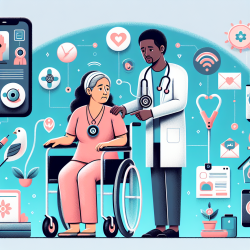Understanding the lived experience of Myasthenia Gravis (MG) is crucial for practitioners who aim to provide holistic and empathetic care. The recent research paper, "The Lived Experience of Myasthenia Gravis: A Patient-Led Analysis," offers invaluable insights that can significantly enhance the skills of healthcare professionals. By integrating these findings into practice, practitioners can better support their patients and improve overall outcomes.
The Essence of Lived Experience
The study highlights five key themes that encapsulate the lived experience of MG:
- Living with fluctuating and unpredictable symptoms
- A constant state of adaptation and trade-offs
- Treatment inertia leading to under-treatment
- A sense of disconnect with healthcare professionals
- Emotional burdens including anxiety, frustration, and depression
Implementing Research Outcomes
Practitioners can take several steps to integrate these insights into their practice:
1. Recognize the Unpredictability
Understand that MG symptoms can vary daily, making it challenging for patients to plan their lives. Flexibility in scheduling and treatment plans can help accommodate these fluctuations.
2. Encourage Adaptation Strategies
Assist patients in developing coping mechanisms and adaptive strategies to manage their daily activities and long-term goals. This can include personalized therapy sessions that focus on energy conservation techniques and stress management.
3. Address Treatment Inertia
Be proactive in discussing treatment options and the potential benefits of changing therapies. Regularly review treatment efficacy and be open to adjustments that may improve the patient's quality of life.
4. Enhance Communication
Bridge the gap between clinical data and patient experiences by fostering open, empathetic communication. Listen actively to patient concerns and validate their feelings, ensuring they feel heard and understood.
5. Provide Emotional Support
Recognize the emotional toll of living with MG and offer resources for mental health support. Encourage participation in support groups and provide referrals to mental health professionals when needed.
Encouraging Further Research
Practitioners should not only implement these findings but also contribute to ongoing research. Engaging in patient-led studies and staying updated with the latest research can provide deeper insights into the lived experiences of MG patients.
Conclusion
By integrating the outcomes of this patient-led analysis, practitioners can enhance their care strategies, ultimately improving the lives of those living with Myasthenia Gravis. To read the original research paper, please follow this link:
The Lived Experience of Myasthenia Gravis: A Patient-Led Analysis.










